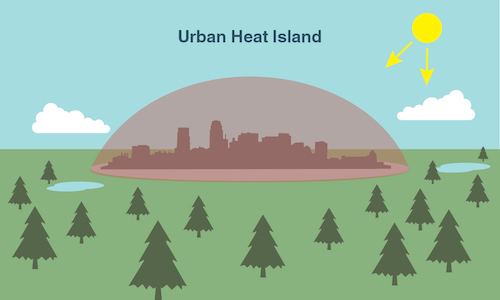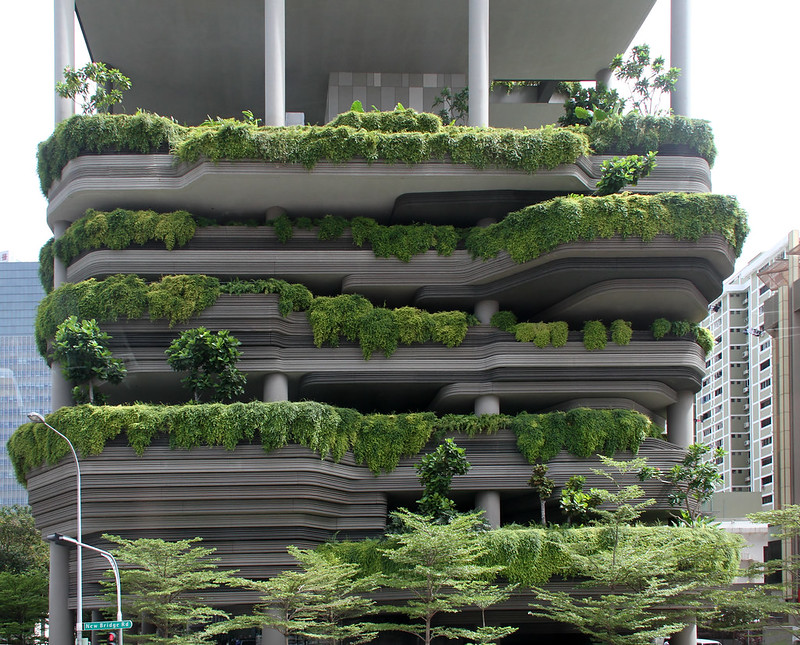 It’s an ordinary day in your home. The temperature of your surroundings is just right, but as you go outside for some fresh air, you feel feverishly hot. Why is it so much hotter outside?
It’s an ordinary day in your home. The temperature of your surroundings is just right, but as you go outside for some fresh air, you feel feverishly hot. Why is it so much hotter outside?
This is the exact question that Singapore has been examining over the last couple of years.
Singapore is a city-state-sized country located off the tip of the Malaysian peninsula. The country is the smallest country by surface area in Southeast Asia and is situated on an island 85 miles from the equator. As a result, the island experiences a hot and humid climate.
Over the last six decades, Singapore’s temperatures have risen twice as fast as the global average. In addition, the high humidity prevents sweat from evaporating and affects the body’s ability to cool down.
Let's find out why Singapore is facing these issues and the solutions being explored.
Heat In Urban Areas
 Urbanizing an area can create what is known as a heat island. Urban areas modify an organic landscape (which removes natural cooling) and add infrastructure (concrete pavements, buildings) that absorb vast amounts of heat. This leads to what is called the Urban Heat Island Effect (UHI).
Urbanizing an area can create what is known as a heat island. Urban areas modify an organic landscape (which removes natural cooling) and add infrastructure (concrete pavements, buildings) that absorb vast amounts of heat. This leads to what is called the Urban Heat Island Effect (UHI).
In Singapore, certain suburban blocks and areas are up to 7˚C hotter than undeveloped areas. Cutting down trees and other plants to make room for residential areas also removes natural shade. Plants cool down their surroundings through a process called transpiration where excess water is released into the air.
In addition, suburban areas produce 70% more global emissions than rural areas from car exhaust, industrial systems, and residential infrastructure. Concrete and asphalt, used in buildings, roads, and pavements, absorb large amounts of heat during the day and slowly release it at night. The dense building layouts also block airflow, making cities hotter.
“Cool” Solutions
 To address these effects, Singapore has made significant efforts over the last two decades to green the city, earning the name Garden City. This has the potential to decrease air temperature by 1-2˚C.
To address these effects, Singapore has made significant efforts over the last two decades to green the city, earning the name Garden City. This has the potential to decrease air temperature by 1-2˚C.
The government plans on adding one million more trees over the next decade. However, this has to be done in a planned manner as too much vegetation can reduce wind flow which is essential for moving cool air into the city.
Singapore also includes petal-shaped building designs, varying building heights, and V-shaped layouts to increase airflow from nearby bodies of water. To take it to the next level, Singapore is implementing a new data model called Duct (Digital Urban Climate Twin) to keep track of buildings, traffic, vegetation, wind, and sunlight to better understand how to cool areas.
There are even simple design changes hidden within the city. Buildings in newer districts face away from the sun, and others have roofs with light-reflective paints to absorb less heat.
Singapore recognizes that cooling has always been expensive with most residents spending six times as much on A/C than U.S. residents on average. This island nation is leading the way in addressing the growing problem of urban heat through its long-term investment.
Sources: NY Times, NBC, Bloomberg, World Bank, NASA








